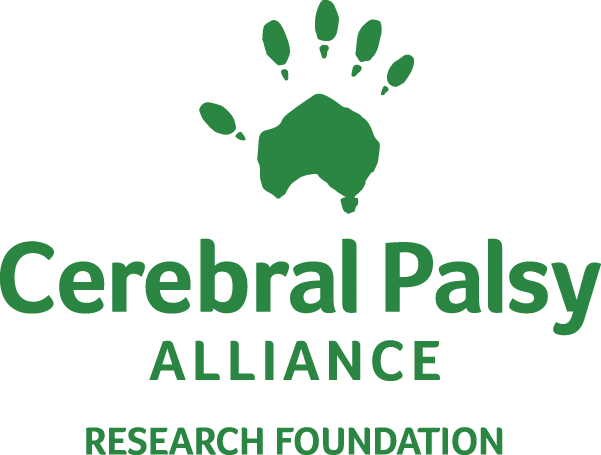
Co-occurring Conditions in Cerebral Palsy
Part One: The Brain and Senses
By Dr. Sara Lewis
Cerebral palsy (CP) is defined as a developmental disorder of movement and posture, but there are frequently comorbidities, also called co-occurring clinical features. This originates from changes in the parts of the brain that regulate the motor neurons, which are the neurons that activate muscles. These changes include loss of both activating connections and inhibiting connections to motor neurons and other neurons as well. This is like having problems with both the gas pedal and brake in your car.
Changes can vary, depending on how the injury occurred and when it happened during development, so CP can look very different from person to person. There are some features you might not even think about, and it’s good to know about these possibilities. This way, you can get support if they start to become an issue.
The frequency and types of these co-occurring conditions are usually assessed by sending surveys to patients in large registries where researchers can ask hundreds of patients about their experiences. Some of the most studied and understood CP comorbidities are other neurodevelopmental disorders.
Since CP is an injury or alteration to the developing brain, it’s no surprise that other brain development features often co-occur with CP. For context, the change compared to the rate in the general US population is shown in parentheses when estimates are possible.
Within the CP population:
- Intellectual disability occurs in ~50% (~50 times more common).
- Epilepsy occurs in 25% to 45% (21 to 38 times more common).
- Autism spectrum disorder (ASD) occurs in 7.5% to 30% (3 to 14 times more common).
Several types of sensory impairments can occur and are thought to be caused by the altered connections in the tracts, which are the pathways that carry information between brain and body, or processing information in the brain.
- Hearing impairment occurs in 10% to 20%.
- Blindness occurs in 10%.
In addition, there are impacts to brain function that can result in more frequent mental and behavioral disorders in the CP population than in the general population:
- Neurobehavioral disorders, such as ADHD, ASD, OCD, or Tourette’s Syndrome, impact >25% (1.5 to 5 times more common).
- ADHD affects 30% (3 times more common).
- Anxiety affects ~40% (4 times more common).
- Sleep disturbances occur in 23%.
Together, this shows that a single injury or other impact to brain development can affect many functions of the brain. In Parts Two and Three of this series, we’ll examine comorbidities of other parts of the body.
About the Author: Dr. Sara Lewis is a Postdoctoral Research Associate at Phoenix Children’s Hospital working with Dr. Michael Kruer to identify genetic causes of cerebral palsy. She received her PhD in Neuroscience in 2015 with an emphasis in genetic neurodevelopmental disorders. Her work integrates human genetics with the fly model to study how genes leading to movement disorders changes in the brain. Her work also addresses the challenges implementing genetics findings in the clinical environment. Her research is funded by CPARF.
Articles Referenced:
Hollung SJ, Bakken IJ, Vik T, Lydersen S, Wiik R, Aaberg KM, Andersen GL. Comorbidities in cerebral palsy: a patient registry study. Dev Med Child Neurol. 2020 Jan;62(1):97-103. doi: 10.1111/dmcn.14307. Epub 2019 Jul 4. PMID: 31273772.
Graham HK, Rosenbaum P, Paneth N, Dan B, Lin JP, Damiano DL, Becher JG, Gaebler-Spira D, Colver A, Reddihough DS, Crompton KE, Lieber RL. Cerebral palsy. Nat Rev Dis Primers. 2016 Jan 7;2:15082. doi: 10.1038/nrdp.2015.82. PMID: 27188686; PMCID: PMC9619297.
Whitney DG, Schmidt M, Hurvitz EA. Shared Physiologic Pathways Among Comorbidities for Adults With Cerebral Palsy. Front Neurol. 2021 Oct 4;12:742179. doi: 10.3389/fneur.2021.742179. Erratum in: Front Neurol. 2022 Jan 18;12:830052. PMID: 34671312; PMCID: PMC8520916.
Wed 21 May 2025
Are you ready for STEPtember 2025? We’re officially in double digits — CPARF is celebrating 10 years of funding groundbreaking cerebral palsy research and driving innovation forward. And there’s no better way to mark this milestone than with our biggest, boldest STEPtember yet. Thanks to you, STEPtember has grown into a global movement that powers […]
Thu 15 May 2025
Celebrate Your Birthday with Purpose: Start a Fundraiser That Changes Lives Birthdays are for joy, reflection, and connection — and now, they can help fund groundbreaking research, fuel innovation in assistive technology, and create lasting change for people with cerebral palsy and other disabilities. Celebrate your special day by starting a customized birthday fundraiser to […]




